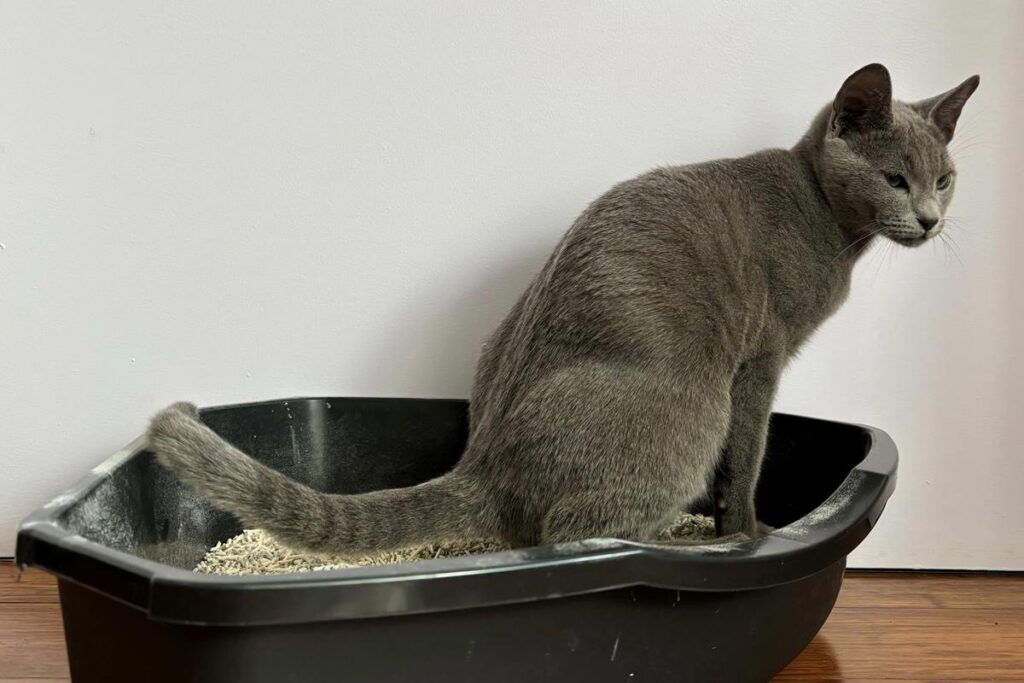At Ultimate Raw we often get asked: “Why is my cat’s stool sometimes loose or even streaked with blood?” One common – but overlooked – cause is a diet based on dry food. While kibble may be convenient for humans, it’s very different from what cats’ bodies are built to eat. This difference can upset the gut’s delicate balance and sometimes lead to serious digestive issues like bloody diarrhea.
.
Cats Are Designed for Moisture-Rich, Meat-Based Diets
Cats are obligate carnivores. In the wild they eat prey that’s about 70–80% moisture, rich in animal protein, and low in carbohydrates. Dry food flips this on its head — usually less than 10% moisture and packed with starch to hold the kibble together. Over time, this mismatch strains the digestive system.
.

.
.
Key Problems with Dry Food
-
Low moisture = dehydrated gut contents. When stool is too dry, it irritates the gut lining and slows transit.
-
High carbs = bacteria imbalance. Cats lack enzymes to properly digest starch, so it ferments in the colon.
-
Ultra-processed ingredients = lost nutrients. High heat alters proteins and creates compounds that can inflame the gut.
.
From Kibble to Dysbiosis: What Happens Inside the Gut
Your cat’s gut microbiome is home to trillions of bacteria that help digest food, produce protective compounds, and keep the immune system balanced. When dry food floods the gut with carbohydrates and additives, it changes which bacteria dominate.
.
Dysbiosis Can:
-
Encourage overgrowth of harmful bacteria
-
Reduce beneficial bacteria that protect the gut lining
-
Increase toxins and inflammation in the intestines
Over time the lining of the gut can weaken, making it more prone to irritation, infection, and even bleeding.
.
Why Dysbiosis Can Show Up as Bloody Diarrhea
Bloody diarrhea isn’t a disease itself — it’s a sign something’s wrong. When the gut lining becomes inflamed or ulcerated, small blood vessels can break, allowing blood to mix with stool. Dysbiosis also increases gut permeability (“leaky gut”), which can worsen immune reactions and tissue damage.
Other possible triggers, such as parasites or infections, should always be checked by your veterinarian. But diet-related dysbiosis is a modifiable factor that often goes overlooked.
.
Helping Your Cat’s Gut Heal
If your cat has bloody diarrhea, see your veterinarian first. Then consider the diet. Moving toward a high-moisture, species-appropriate diet can help restore balance:
.
Tips to Support Gut Recovery
-
Switch gradually to a raw or gently cooked meat-based diet balanced for feline needs.
-
Include gut-supportive supplements like probiotics or prebiotic fibers formulated for cats.
-
Prioritize hydration with fresh water and moisture-rich meals.
At Ultimate Raw, we formulate diets that mirror the prey cats are designed to eat — rich in animal protein, high in moisture, and free from unnecessary fillers. Many cat guardians report improved stool quality, shinier coats, and better overall health when making the switch.
.
Bottom Line
Dry food may be convenient, but it’s not what cats evolved to eat. Its low moisture, high carbohydrate content, and heavy processing can disrupt the gut microbiome, leading to inflammation and, in some cases, bloody diarrhea. By feeding a species-appropriate raw diet, you can support your cat’s digestive health, prevent dysbiosis, and help them thrive the way nature intended.
.

